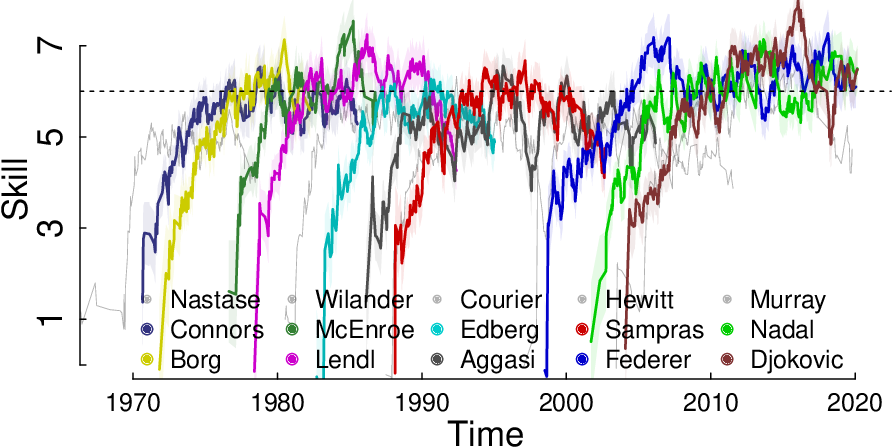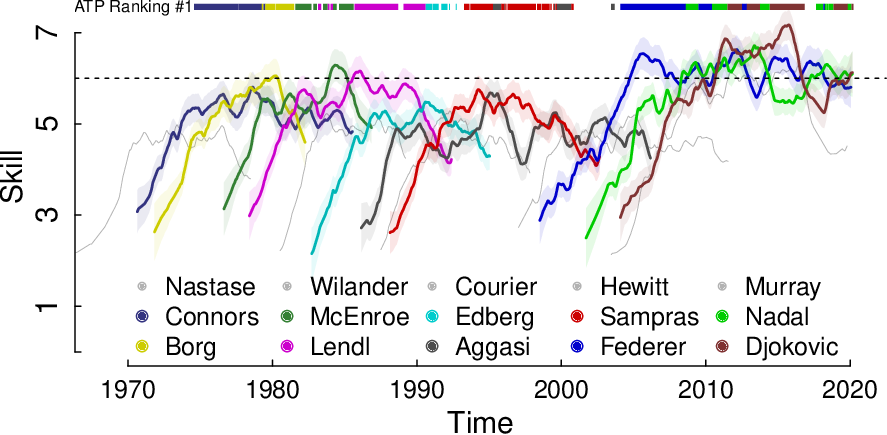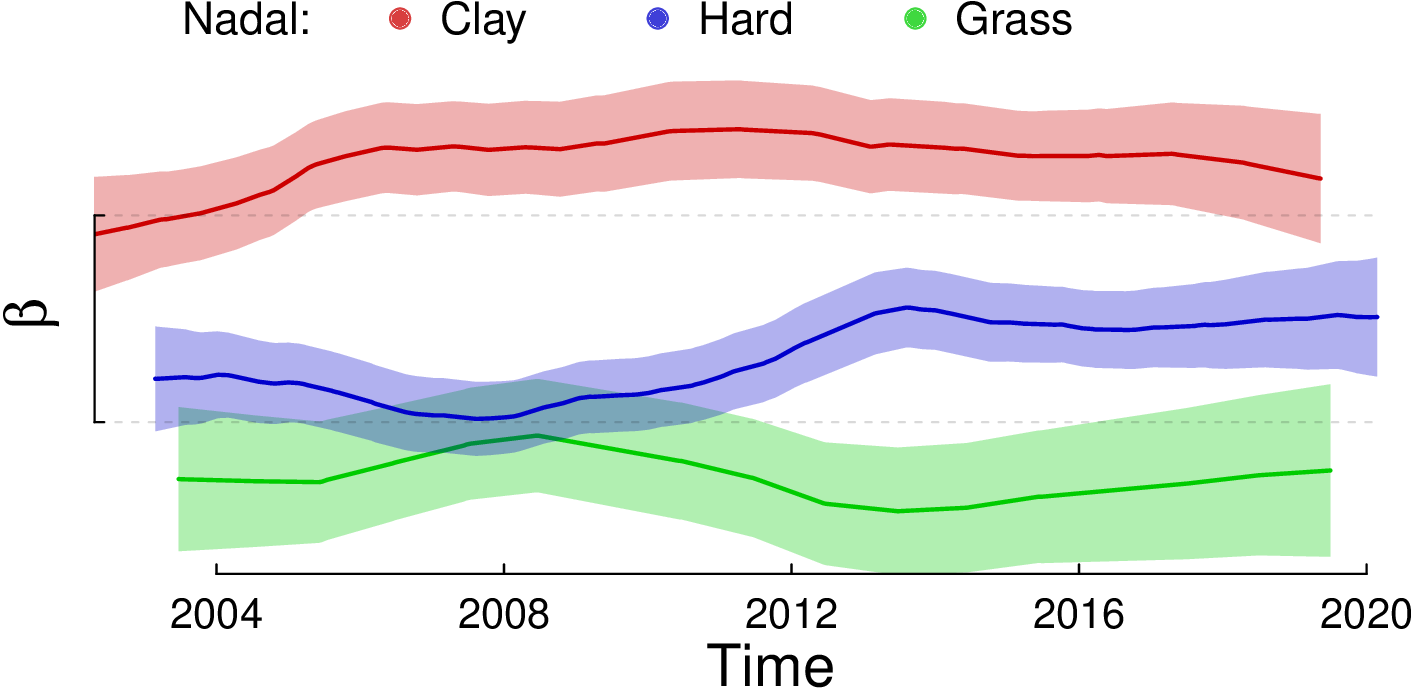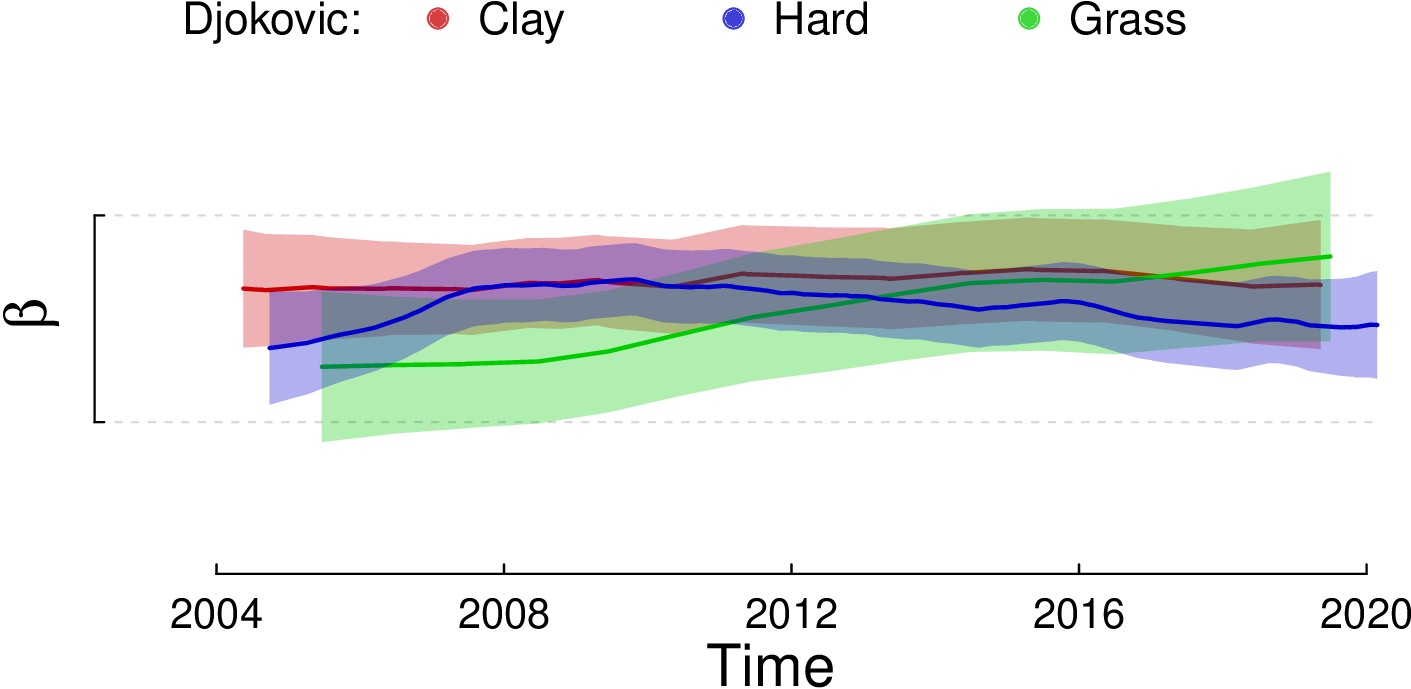August 4 and 5, 2023 - Santiago del Estero, Argentina
Reliable initial skill estimates and historical comparability with Julia, Python and R
The models commonly used in industry and academia (Elo, TrueSkill, Glicko, Item-Response Theory) are based on an ad-hoc solution that prevents them both from having good initial estimates and from guaranteeing comparability between estimates separated in time.

The advantage of TrueSkill Through Time lies in its temporal causal model, that links all historical activities in the same Bayesian network, which guarantees both good initial estimates and the temporal and spatial comparability of the estimates.

The above figure presents the learning curves of some famous players in ATP history. A one-point difference between skills is equivalent to 76% probability of winning. The top bar indicates which player was at the top of the ATP’s ranking.
TrueSkill Through Time allows comparing the relative ability of players over time. Here we discover that the 10th player in the historical ATP’s ranking, Hewitt, is just a product of the window of opportunity that was opened in the year 2000; and the 4th most skilled player in the history of ATP, Murray, is ranked 14th just above Nastase.
Multi-dimensional skills
In the above example we summarize the players' skills in a single dimension. We know, however, that the ability of tennis players can vary significantly depending on the type of ground. TrueSkill Through Time allows estimating this type of multi-dimensional skills.


The above figures show the skill difference that Nadal and Djokovic have in each of the three types of ground. The Nadal’s skill difference between clay and grass gorunds is greater than one ponit, which means at least 76% difference in probability of winning compared to itself. Djokovic has very similar skills on all three types of ground.